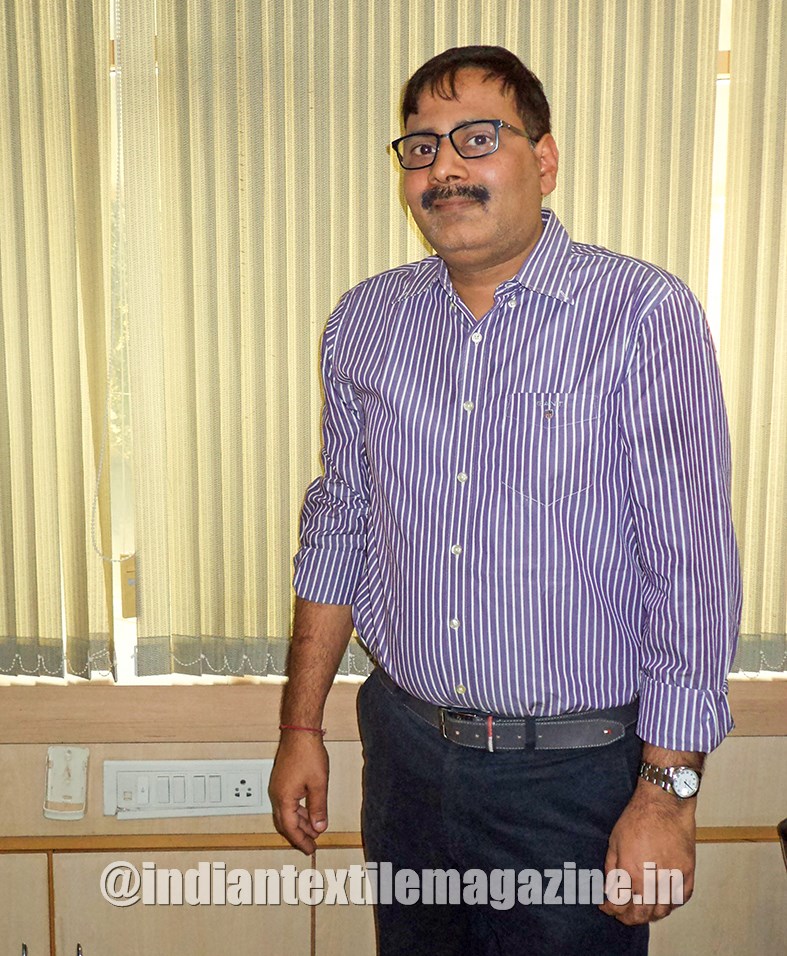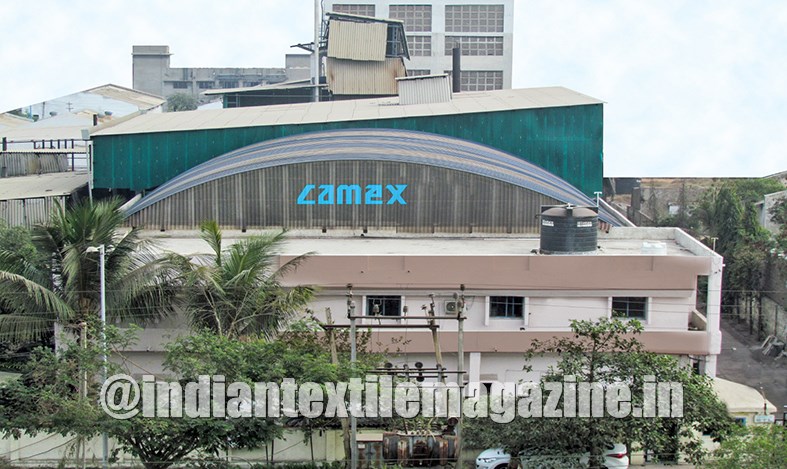Textile dyes manufacturer Camex Ltd. has certainly come a way since its inception in 1988, as highlighted by President (International Marketing), Arun Chandalia

Ahmedabad-headquartered textile dyes manufacturer Camex Ltd. made modest beginnings with trading of dyes in 1988 and has made a notable journey since then. The company has grown through a combination of organic and inorganic growth, having acquired Devria Intermediate Ltd. in 1999. Today, its presence can be felt in more than 50 countries across six continents. The company’s production facility with a capacity of 8,000 MTA is located in Ankleshwar, Gujarat, which is also a major chemical manufacturing hub in India. Camex has a strong and dedicated workforce of around 200 employees with more than a quarter manning research and development and quality control alone.
Right from the discovery of synthetic dyes in 1856, the dyes industry was dominated by MNCs in India. However, the 1970s and 1980s led to setting up of hundreds of dyes manufacturing units in India, particularly Gujarat. Dyes are categorised based on their applications, so while India is strong in reactive dyes used in natural fibres such as cotton and cellulose, China is strong in disperse dyes used in manmade fibres like polyester. Reactive dyes account for 70% of production at Camex, with the rest being acid dyes used in leather, nylon and silk and also direct dyes used in the laundry and paper industry.
Till 2003, the company concentrated on the domestic market but with capacity expansions and research and development, the company started focusing on international markets and currently its exports make up about 70% of textile dyes revenues, with the rest accounted for by domestic sales. Camex’s products are GOTS and eco-friendly-certified and the company has addressed environmental concerns by adopting eco-friendly production methods to reduce pollution, waste reduction, and recycling, while being compliant with regards to discharge of effluents.
India was also a major manufacturing base for dyes intermediate, a key raw material used in producing dyes, till the late 1980s. Chinese manufacturers, gauging the volume and opportunities, set up large manufacturing plants for dye intermediates and using economy of scale, were able to cut down cost and make their products competitive. In the early 1990s, there was a flood of Chinese suppliers, offering low-priced intermediates in the Indian market, which prompted many Indian intermediates manufacturers to switch to dyestuffs manufacturing, where the process and infrastructure is almost similar.
When quizzed about the reason behind the steep drop in intermediates’ manufacturing facilities in India, Arun Chandalia, President (International Marketing) at Camex Ltd., says: “Unfortunately, most of the dyes intermediates’ manufacturers in India till 1980s were in the small-scale sector and hence were unable to compete the onslaught of Chinese products. Nowadays, it is more cost-effective to purchase intermediates from Chinese suppliers rather than to manufacture them.”
He further explained that the product portfolio of textile dyes is very extensive and any at any given point of time, a company may have to manufacture hundreds of products, whereas major ingredients like intermediates used to manufacture all the finished products constitute less than a dozen.
In the dyestuff industry, there are standard dyes as well as customised products. Customised dyes are developed on specification and demand from customers and this is the segment which is Camex’s forte, which is why Chandalia prefers to call Camex a ‘customer-focused company’. At Camex, research and development is a continuous process as it keeps developing new products while adding innovative features to the existing ones, taking cognizance of their worldwide customer base. And with a view to maintain the highest standards of quality, the company manages two quality control laboratories, one at the plant in Ankleshwar and the other in Ahmedabad. The plant QC laboratory tests all the shipments, while samples are also sent to Ahmedabad QC laboratory, where they are tested again.
Competition is fierce in the domestic as well as export markets as there are around 500 Indian companies and numerous Chinese, Korean, Taiwanese, Thailand and European companies. Camex may not be largest in terms of production capacity as compared to its bigger competitors, but it thrives on excellent customer relations, spread and network to continue to grow and excel. According to Chandalia, the existing customers, even after being offered a lower quote by other competitors, still prefer to do business with Camex because of the relationship, reliability and consistent quality. He also adds that Camex bags orders on the strength of its product quality and would never prefer to sell at throwaway prices to withstand competition.
“Steady pricing augurs well in the long term as predatory pricing can impact the company’s bottomline,” he states. Moreover, the company generates most of its revenues from customised dyes, which ensures long-term relationships. This has helped it create a niche market for itself which becomes very difficult for others to penetrate. Speaking about the competition with MNCs, he informs that there are only a few products in the textile dyes portfolio of MNCs, which requires an altogether different chemistry that is not manufactured by Camex, but still the company is successfully competing with the MNCs in most countries with its high quality of dyes and competitive pricing.
As for the current slowdown in the textile industry and its impact on manufacturers of textile dyes, Chandalia attributes it to the gross over-estimation in demand for dyes that has resulted in excess capacity. Even after closure of several small Indian textile dyes production units in the last few years, there is still surplus capacity to the tune of 50%, thereby leaving an enormous gap between and supply and demand. “Raw material supply too has become a big constraint as production of dye intermediates, whether in India or China, is dependent on a few major manufacturers. The prices of raw materials have off late been very volatile with manufacturers forming cartels and jacking up prices to an unrealistic level,” he states. Meanwhile, he does not expect the textile dyes industry to grow at a phenomenal rate, but is hopeful that 2020 would be better then 2019 with industry growth pegged at around 5-6%.
“Nowadays, it is more cost-effective to purchase intermediates from Chinese suppliers rather than to manufacture them
– Arun Chandalia, President (International Marketing), Camex Ltd.
As for the current slowdown in the textile industry and its impact on manufacturers of textile dyes, Chandalia attributes it to the gross over-estimation in demand for dyes that has resulted in excess capacity.
